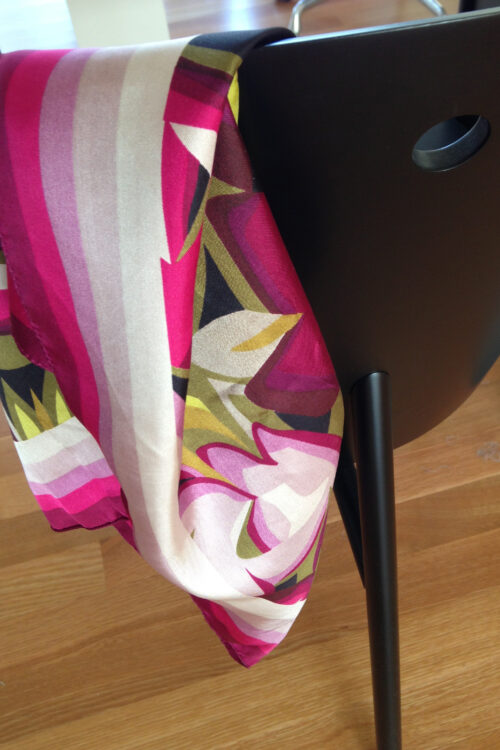
 Last year for my birthday my daughter bought me a scarf. Pretty as it was, this gift came with a little zing, a point to be made. The scarf (a Missoni design) was a Target ‘original’, part of its upscale designer collections.
Last year for my birthday my daughter bought me a scarf. Pretty as it was, this gift came with a little zing, a point to be made. The scarf (a Missoni design) was a Target ‘original’, part of its upscale designer collections.
I admit it, there’s something in me that resists the commodification of high design. Design is not just about a label or a name. It’s as much about presentation and styling, ambience and merchandising. Quality above all. In a New Yorker article back in 1999, John Seabrook took readers on a tour of Nobrow Culture — that place where the lines between highbrow and lowbrow are blurred (a book on the subject would follow). If museums were, at one time, a place for quiet contemplation of art, now they bank on blockbuster shows. If mass retailers like the Gap knocked off elite designers like Helmut Lang, the tables would soon enough turn, with high-fashion designers taking casual wear to new heights.
Really, I’m not a snob, and any pleasure I take from shopping has even more to do with the time spent with my daughter and/or friends than any purchases to be made. Putting aside the consumerism involved, it is a bona fide bonding experience, a “modern form of hunting and gathering,” as Sharon Zukin put it in a New York Times article a few years back. A professor of sociology and author of Point of Purchase: How Shopping Changed American Culture, she also suggested it might be “a stepping stone toward adult independence.”
No question about the bonding. Re: independence – tough economic times cut into that argument, with grown children relying more and more on their parents. So when my reasonably independent daughter asks me if I would venture out to Target for something she wants from the Neiman Marcus/Target Holiday Collection, I figure sure, why not? I can kill two birds with one stone, pick up some paper towels and toothpaste. Muster up some holiday spirit, feed my curiosity: What could be enticing enough for shoppers to line up at 8 a.m? And would it be a madhouse when I moseyed on over a few hours later, slim pickings all I get?
The answer to the first question is something I could easily surmise, if news images of mad shoppers in pursuit of Black Friday deals are any indication. Whatever bargains are to be had pale in comparison to the Quest, be the early bird, jockey for position, get to the head of the line. Shop till you drop, it’s a race to the finish.
The answer to the second question is – surprise! – just a few shoppers browsing, plenty of everything still available. The bigger surprise, to me, was the dud of it all, a mostly uninspired assortment of clothing, accessories, travel items nestled in the back of the store. I wavered between a sweatshirt ($29.99) and a scarf ($69.99) that my daughter wanted. I consulted with another shopper and a Target employee, the better part of me knowing where I was headed. “That’s a lot of money for a scarf,” said the Target employee. Even if it’s a cashmere blend. Even if it has Marc Jacob’s name emblazoned on it.
So here’s another question, or two: What does it say about our culture when shopping, both online and in stores, has come to feel a little like gambling – i.e., buy something today, or wait for a better price tomorrow? There’s no arguing that high design comes at a (highly) inflated price. But has the notion of value become so diluted, no accounting for craftsmanship and quality, that the low-rent version of designer goods is good enough, as long as they bear that coveted signature label?

